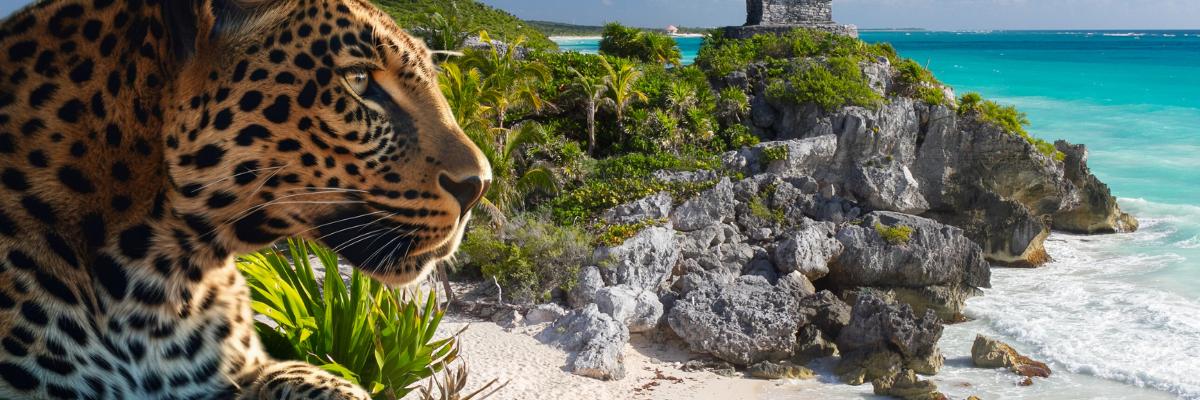Official Website
Ana y José Hotel & Beach Club {{noticia.nombre}} in Tulum
The Jaguar Park in Tulum
The Jaguar Park in Tulum
Sept. 23, 2024
News in Tulum1. Purpose of the Jaguar Park.
The Jaguar Park seeks to be a space dedicated to environmental conservation and at the same time offer a unique cultural experience to visitors. Being located near the Mayan ruins, it will combine respect for the history of the Mayan civilization with care for the local biodiversity, especially the habitat of the jaguar, an emblematic species in the area.
2. Jaguar and Biodiversity Conservation
One of the central objectives of the park is the preservation of the jaguar in its natural habitat. The jaguar is a symbol of Mayan culture and is considered a keystone species in the Mexican rainforest. Through the park, it is hoped to protect both jaguars and other local endangered species.
3. Cultural and Natural Integration
The park will offer visitors the opportunity to learn more about Mayan culture and the connection of this civilization with nature. The park is expected to include areas dedicated to environmental education, archeology, and Mayan history, emphasizing how this culture coexisted respectfully with the environment.
4. Sustainable Tourism
The Jaguar Park is designed to promote sustainable tourism in Tulum, a place that has grown rapidly in popularity. The project aims to reduce the environmental impact of mass tourism and create a space where visitors can learn about nature and the importance of conserving it, while enjoying the natural and cultural beauty of Tulum.
5. Activities in the Park
The park is expected to include a series of recreational and educational activities such as:
- Interpretive trails through the jungle.
- Guided tours of the local fauna, with a special focus on the jaguar.
- Cultural and archeological exhibits related to the Mayan civilization.
- Spaces for bird and wildlife watching.
The Jaguar Park will also seek to have a positive impact on the local community by generating employment and promoting the participation of local residents in environmental protection. It will also provide opportunities for future generations to understand and value their natural and cultural heritage.
The Jaguar Park seeks to be a space dedicated to environmental conservation and at the same time offer a unique cultural experience to visitors. Being located near the Mayan ruins, it will combine respect for the history of the Mayan civilization with care for the local biodiversity, especially the habitat of the jaguar, an emblematic species in the area.
2. Jaguar and Biodiversity Conservation
One of the central objectives of the park is the preservation of the jaguar in its natural habitat. The jaguar is a symbol of Mayan culture and is considered a keystone species in the Mexican rainforest. Through the park, it is hoped to protect both jaguars and other local endangered species.
3. Cultural and Natural Integration
The park will offer visitors the opportunity to learn more about Mayan culture and the connection of this civilization with nature. The park is expected to include areas dedicated to environmental education, archeology, and Mayan history, emphasizing how this culture coexisted respectfully with the environment.
4. Sustainable Tourism
The Jaguar Park is designed to promote sustainable tourism in Tulum, a place that has grown rapidly in popularity. The project aims to reduce the environmental impact of mass tourism and create a space where visitors can learn about nature and the importance of conserving it, while enjoying the natural and cultural beauty of Tulum.
5. Activities in the Park
The park is expected to include a series of recreational and educational activities such as:
- Interpretive trails through the jungle.
- Guided tours of the local fauna, with a special focus on the jaguar.
- Cultural and archeological exhibits related to the Mayan civilization.
- Spaces for bird and wildlife watching.
The Jaguar Park will also seek to have a positive impact on the local community by generating employment and promoting the participation of local residents in environmental protection. It will also provide opportunities for future generations to understand and value their natural and cultural heritage.

